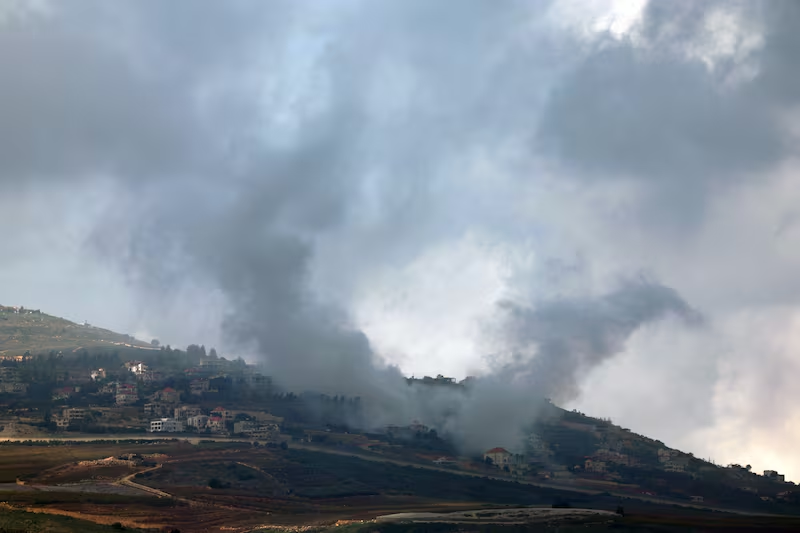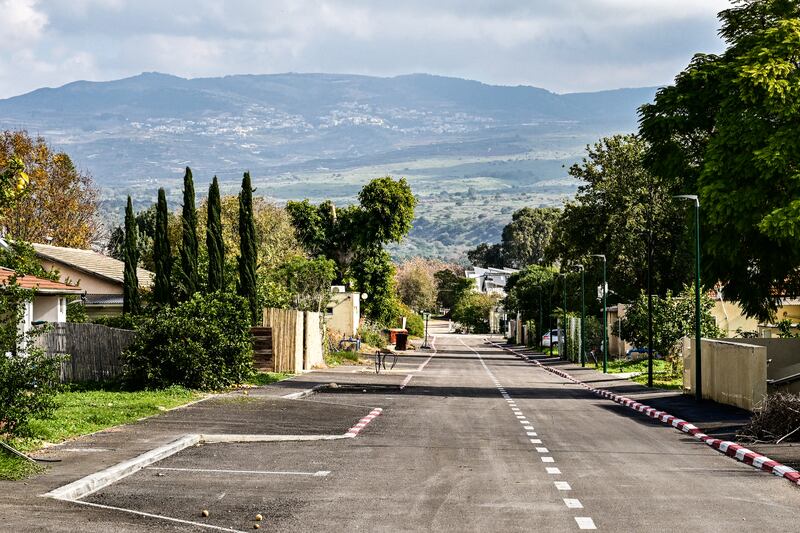The border between Israel and Lebanon has become a landscape of abandoned towns and neglected farms as escalating tensions and tit-for-tat strikes between Israeli forces and Hizbullah militants have displaced more than 150,000 people in both countries.
Prospects for an end to the cross-border hostilities have grown only dimmer since the assassination on Tuesday of a senior Hamas leader in a suburb of Beirut, the Lebanese capital, fed growing fears of a wider war. The strike has been widely ascribed to Israel.
In northern Israel, near the border with Lebanon, military orders to evacuate have kept people from their homes for nearly three months amid daily missile and rocket attacks by Hizbullah and other armed factions in Lebanon. The prolonged dislocation and economic fallout have increased pressure on the Israeli government to put an end to the attacks.
“Every day people are being fired on,” said Moshe Davidovitz, who leads a regional council in the western Galilee region of northwestern Israel. “Every day they’re running into shelters. It’s intolerable, and it cannot continue. We can’t go on being ducks in a shooting range.”
Many residents near the border work in agriculture and have been all but cut off from the farms, hothouses and chicken coops that are their livelihood, Davidovitz said. Day trips to tend to their farms are fraught with risk: one farmer, a father-of-three, was killed in a strike launched from Lebanon last month as he drove to his apple orchards in Mattat, just south of the border.

In southern Lebanon, where many residents also work on farms, some voiced trepidation, defiance or resignation as they wrestled with whether to flee Israeli strikes on Hizbullah targets. Those who have left have received little help from Lebanon’s government, which has been hit by a financial meltdown precipitated by years of corruption and mismanagement. In Israel, the government pays for housing and meals for displaced residents.
Mohamad Srour, the mayor of Aita al-Shaab, a Lebanese town of 12,000 about a kilometre from the Israeli border, said that 10 people there had been killed in fighting in the area. “I didn’t want to leave the town,” Srour said. “I was going back and forth. But now I have left for good.”
[ Attacks in Lebanon and Iran heighten fears of wider war in the Middle EastOpens in new window ]
Imad Zayton (69), who lives with his wife and three children in the southern Lebanese town of Deir Kifa, about 16km from the Israeli border, has so far chosen to stay.
“Hizbullah are defending my country,” said Zayton, who runs a small printing shop. But he added that “if things get worse”, his family would have to leave the town, though he plans to remain. “We will have no choice,” he said.
The death of the Hamas official Saleh al-Arouri in an explosion has only increased fears of a broader conflagration in the region.
Whatever the big leaders’ plans are, nothing is in our hands and we can’t change anything
— Najib al-Amil, a priest based in Christian border town in Israel
At Arouri’s funeral on Thursday, many pledged to avenge his death as his coffin, draped in the flag of Hamas and topped with a rifle, was carried in a procession through the streets of Beirut. Mourners also carried coffins holding the bodies of two Hamas members – including a commander from its armed wing, the Qassam Brigades – who were also killed in the explosion.
“With our soul and our blood, we will redeem you!” the mourners chanted, as gunfire rang out and crowds of young men jostled one another to catch a glimpse of Arouri’s coffin.
[ Israel targets Hizbullah cells and weapon stores in strikes across south LebanonOpens in new window ]
When the procession arrived at a cemetery in the Palestinian refugee camp of Shatila, the voice of Ismail Haniyeh, Hamas’s top political leader, sounded over a speaker system, and the crowd fell silent.
“The enemy believed that assassinating the leaders would deter them,” said Haniyeh, who is based in Qatar. “The enemy failed, and will never succeed.”
Other speakers echoed threats made by the leader of Hizbullah, Hassan Nasrallah, in a speech a day earlier. “The enemy should know that the response is coming, and this incident will not go unpunished,” said one Hizbullah official, Hassan Hoballah.

On Thursday, Israel’s defence minister, Yoav Gallant, met in Tel Aviv with Amos Hochstein, a senior adviser to US president Joe Biden, to discuss the crisis on the Israeli-Lebanese border. Afterward, Gallant said in a statement that there was “a short window of time for diplomatic understandings”.
The defence minister reiterated recent calls by other Israeli officials for “a new reality in the northern arena, which will enable the secure return of our citizens”, without specifying how Israel might achieve that.
The Biden administration has been pushing for a deal to ease tensions and move Hizbullah forces away from the border, but with little apparent progress. On Thursday, the Israeli military said it had responded to a new round of strikes from Lebanon by launching air strikes at a Hizbullah observation post and an anti-tank unit.
As the fighting along the border continued, Israel’s military pressed on with its bombardment of the Gaza Strip, where nearly two million residents have been forced from their homes and many are starving, according to the United Nations. A strike on Thursday on a home west of Khan Younis, the largest city in southern Gaza, killed at least 14 people and injured several others, including women and children, according to Wafa, the Palestinian Authority’s official news agency.
The Israeli military did not immediately respond to a request for comment on the report. It said on Thursday that it had been striking Hamas infrastructure around Khan Younis and had dismantled a tunnel shaft in the area.
The displacement of Israelis amid the current conflict is the largest experienced in the country’s history.
Of the 200,000 Israelis who have relocated since the Hamas-led attack on October 7th, more than 80,000 live near the border with Lebanon. The decision to move them was precipitated not only by Hizbullah’s attacks, but also by worries that the group might try an incursion similar to that by Hamas, which resulted in the deaths of an estimated 1,200 people.
In southern Lebanon, about 75,000 people have been displaced, according to the UN.
One resident who has stayed put, Najib al-Amil, is a 72-year-old priest in Rmeish, a Maronite Christian town near the Israeli border where the schools and shops are closed, the streets are empty and the only remaining medical facility is a makeshift field hospital. He is determined to tend to his flock of parishioners, however dwindling that flock may be.
Al-Amil said he and others tried to avoid areas of intense conflict, and noted that unlike the Israeli government, the Lebanese administration had made no provision for bomb shelters.
“Whatever the big leaders’ plans are, nothing is in our hands and we can’t change anything,” he said. “We are dependent on God.” – This article originally appeared in The New York Times










